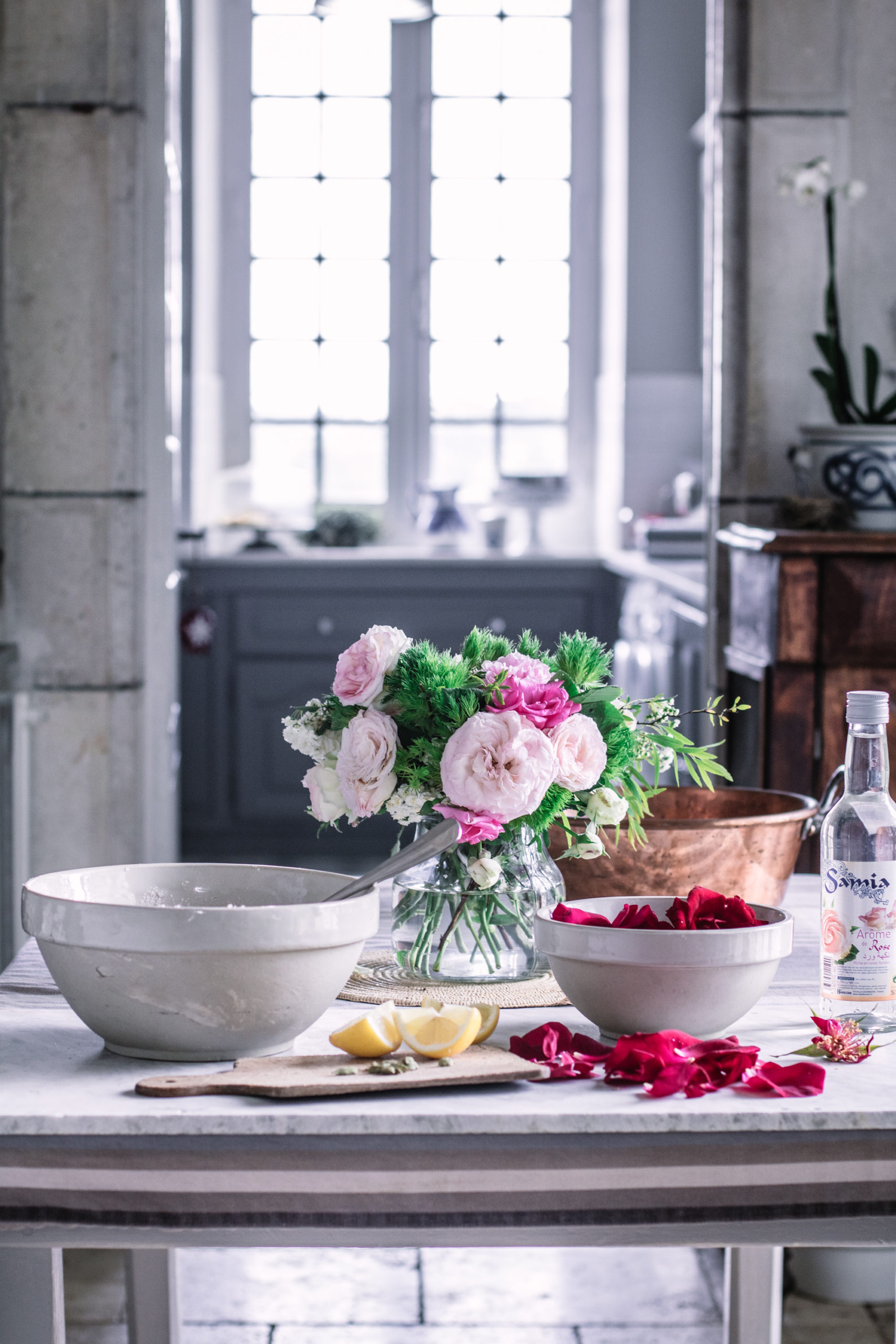
This morning I filled a garden trug with rose petals; beautiful, deep Bordeaux-red rose petals that smell like blackberry and damsons. As you can imagine, any recipe that begins with: ‘take a walk around the garden at dawn and collect a basket of fragrant rose petals’, is clearly as romantic as it sounds. Their jammy bedfellow is Rhubarb, which can clearly use a little sex appeal. Although it’s luscious red stems are rather beautiful, it is, after all, a vegetable, so if it has any chance of making it to the top of the jam pops, it really needs a beautiful leading lady.
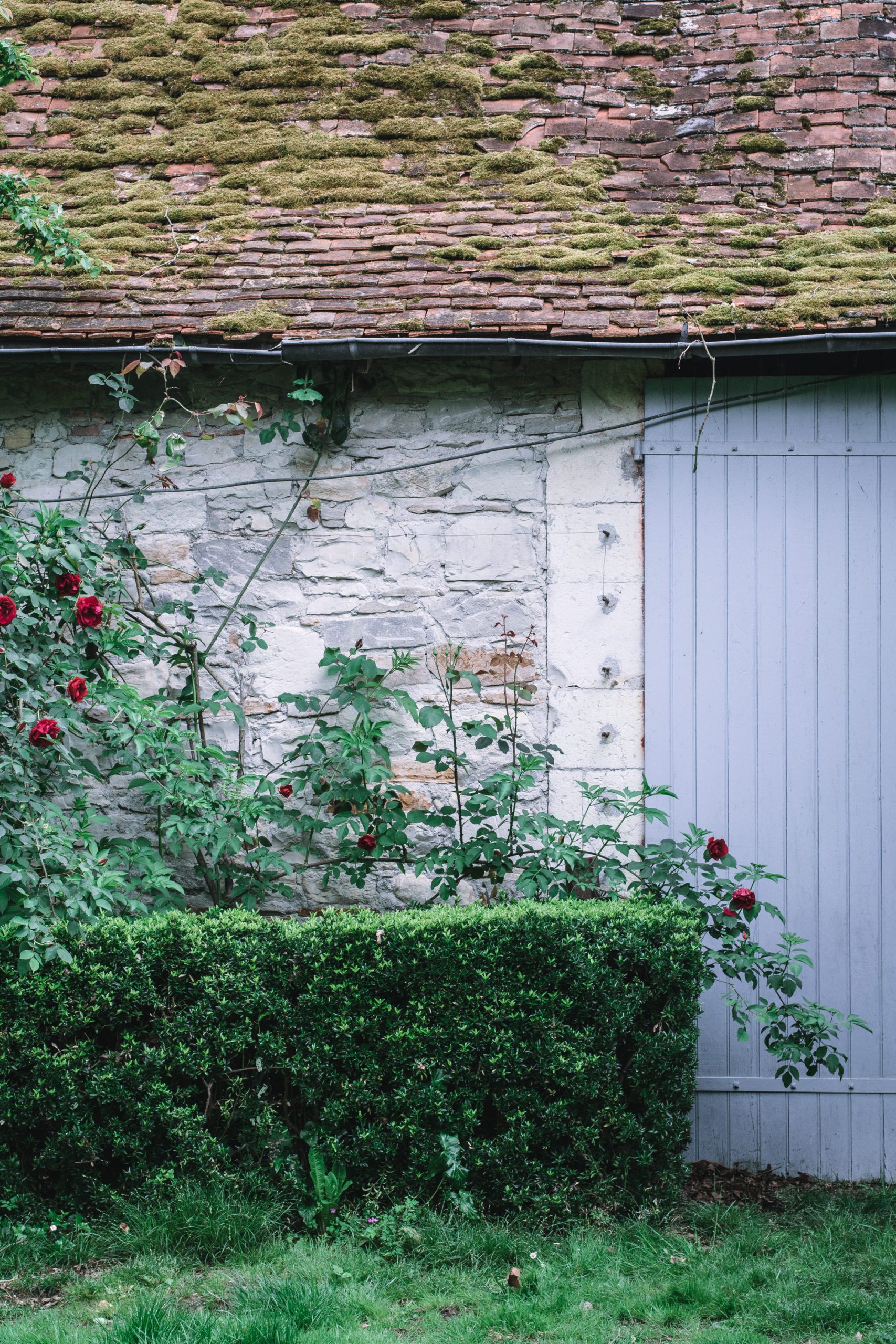
If I had to count the hours I’ve spent perusing garden books, roses would have to be the one thing I obsess over the most. Since we began restoring the gardens at Chateau Montfort, I’ve managed to fill every spare sunny gap with a rose and every bare wall with a climber, so now that Spring has arrived, I clearly have an abundance of petals.
The red rose I used for the jam is happily scrambling up our old barn. When we arrived it was starved of sunlight and a rather sorry specimen, but with some fairly major pruning of the Plane trees behind the walled garden, it’s suddenly had a new lease on life. I’m not sure what its called, but the fragrance is so strong I can smell it from a good 5 meters away.
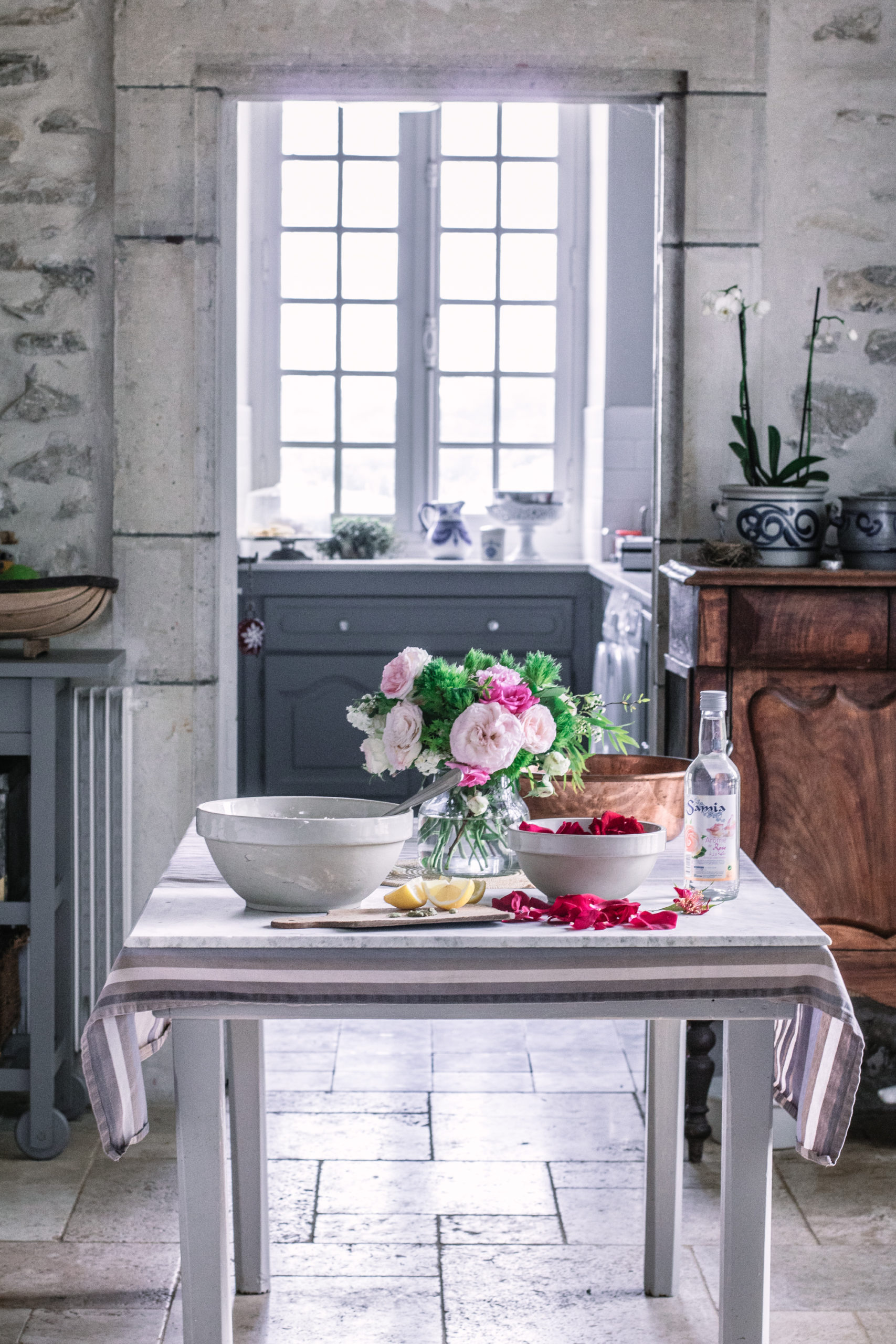
It doesn’t matter which rose you choose, but you do need to be sure it hasn’t been sprayed. I also recommend cutting off the base of the petal which can be a slightly firmer texture to the rest.
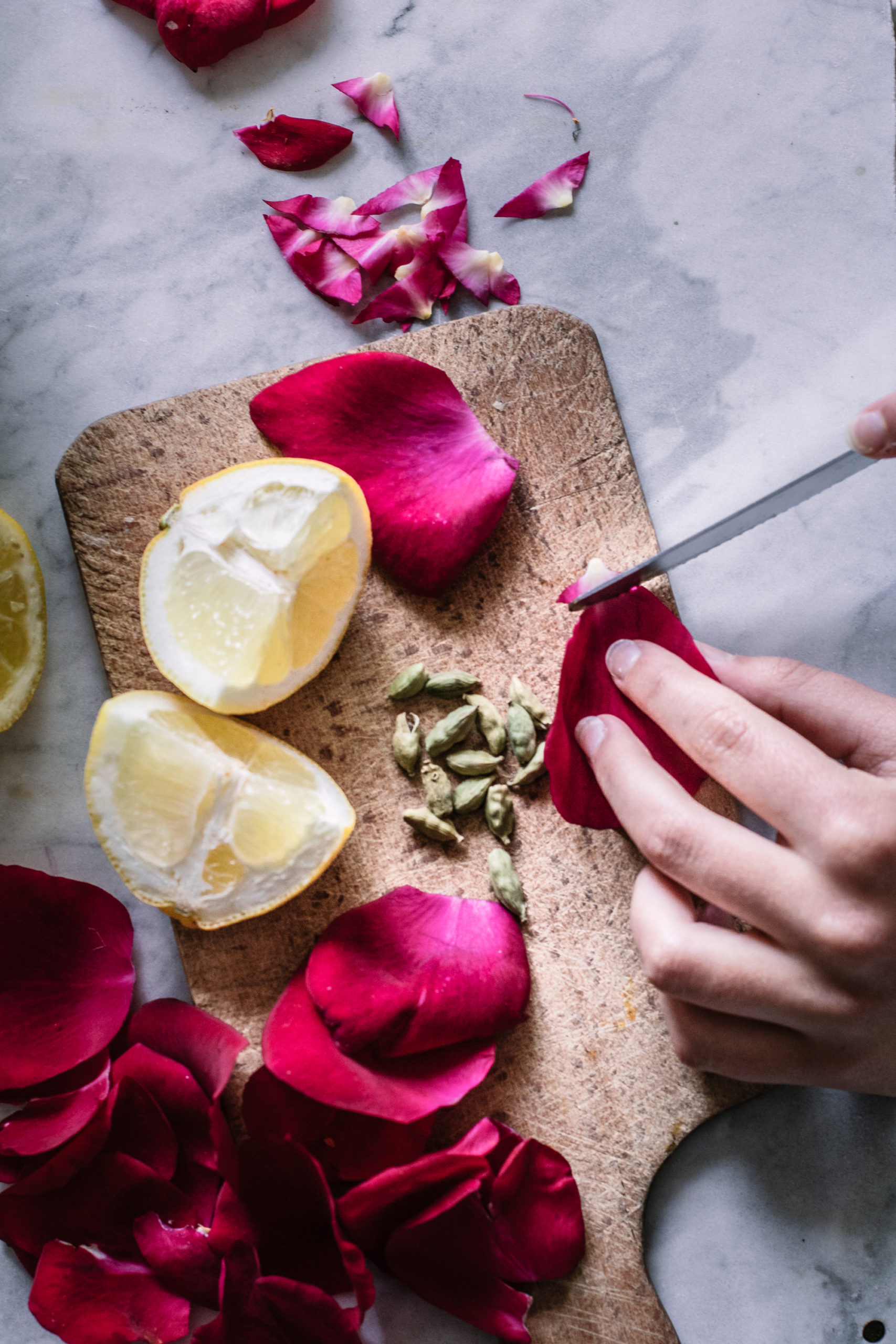
As with all jams, it’s important to let the fruit macerate with the sugar overnight, or for at least 12 hours in advance. If you’re using a copper jam pot this is also essential in order to avoid the fruit acids coming directly in contact with the copper.
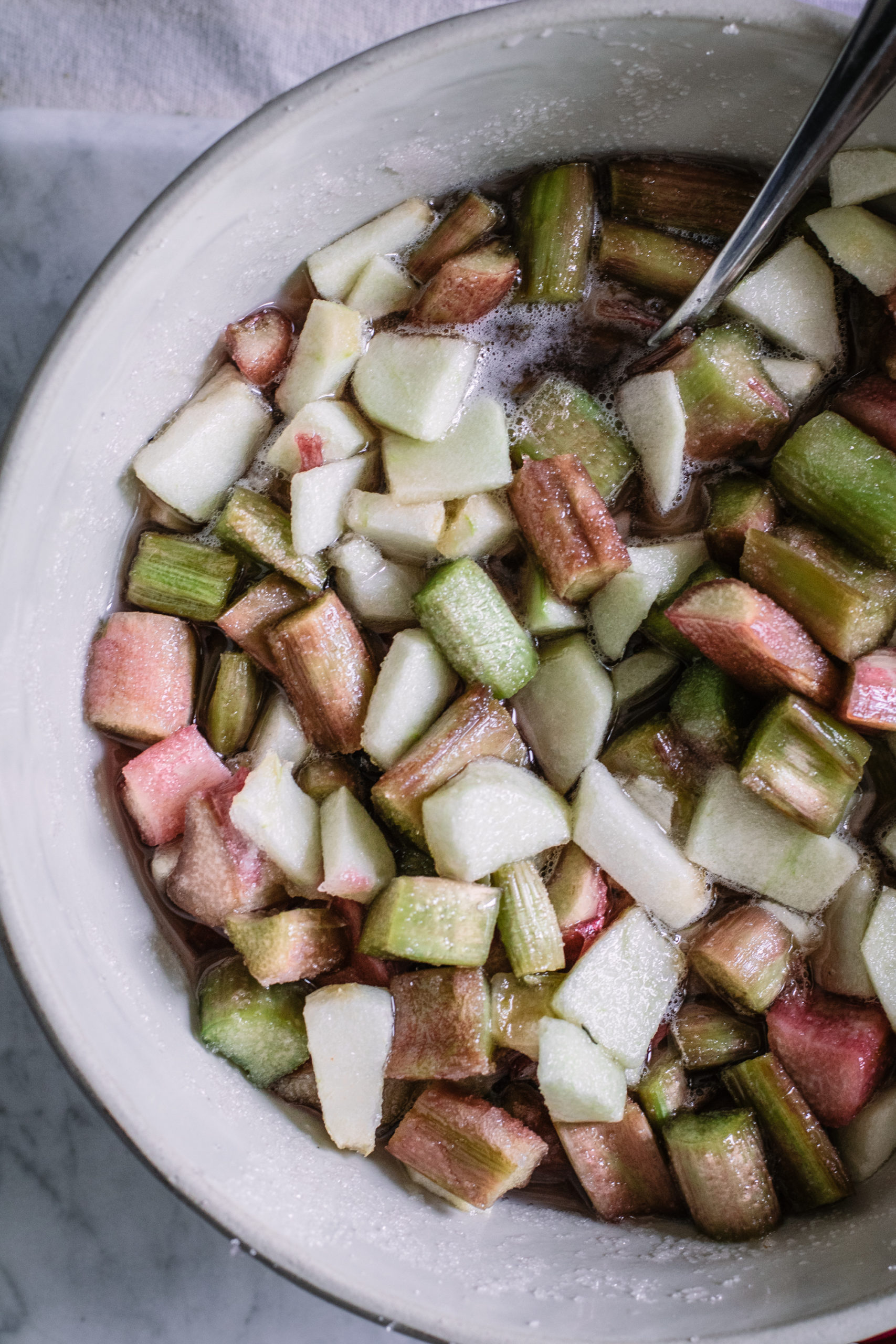
I love a touch of the exotic and cardamom adds a little bit of that. If you don’t like it, feel free to omit it, or add a little freshly grated ginger instead.
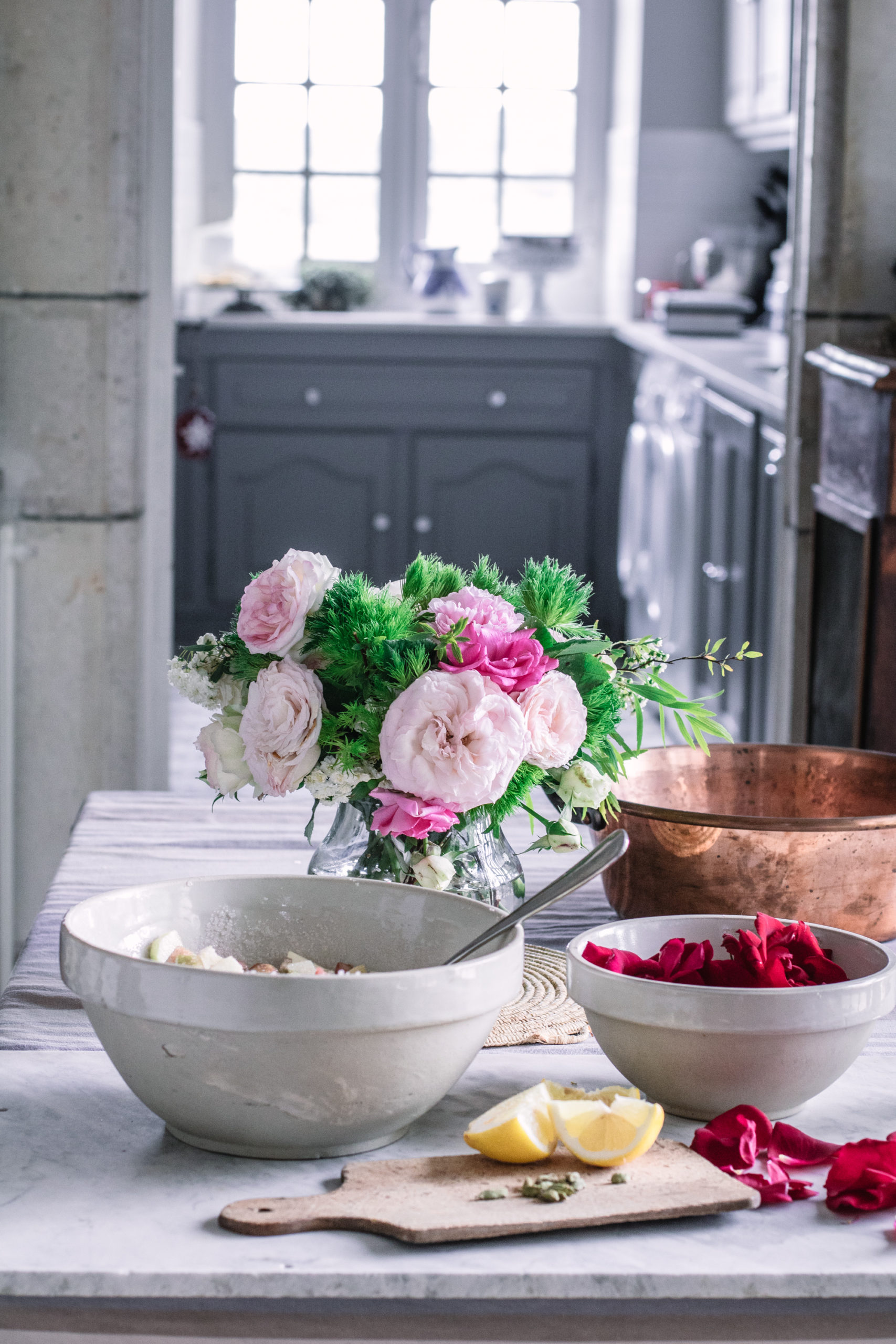
What is rhubarb and rose petal jam good with?
I love eating this Springtime jam dolloped on riz au lait (rice pudding), or with a little pot of our local sheep’s milk yoghurt for breakfast. It’s also perfect with vanilla-laced whipped cream on a freshly baked scone. I think this has got to be the ultimate ladies afternoon tea, served with a pot of Earl Grey tea in the garden.
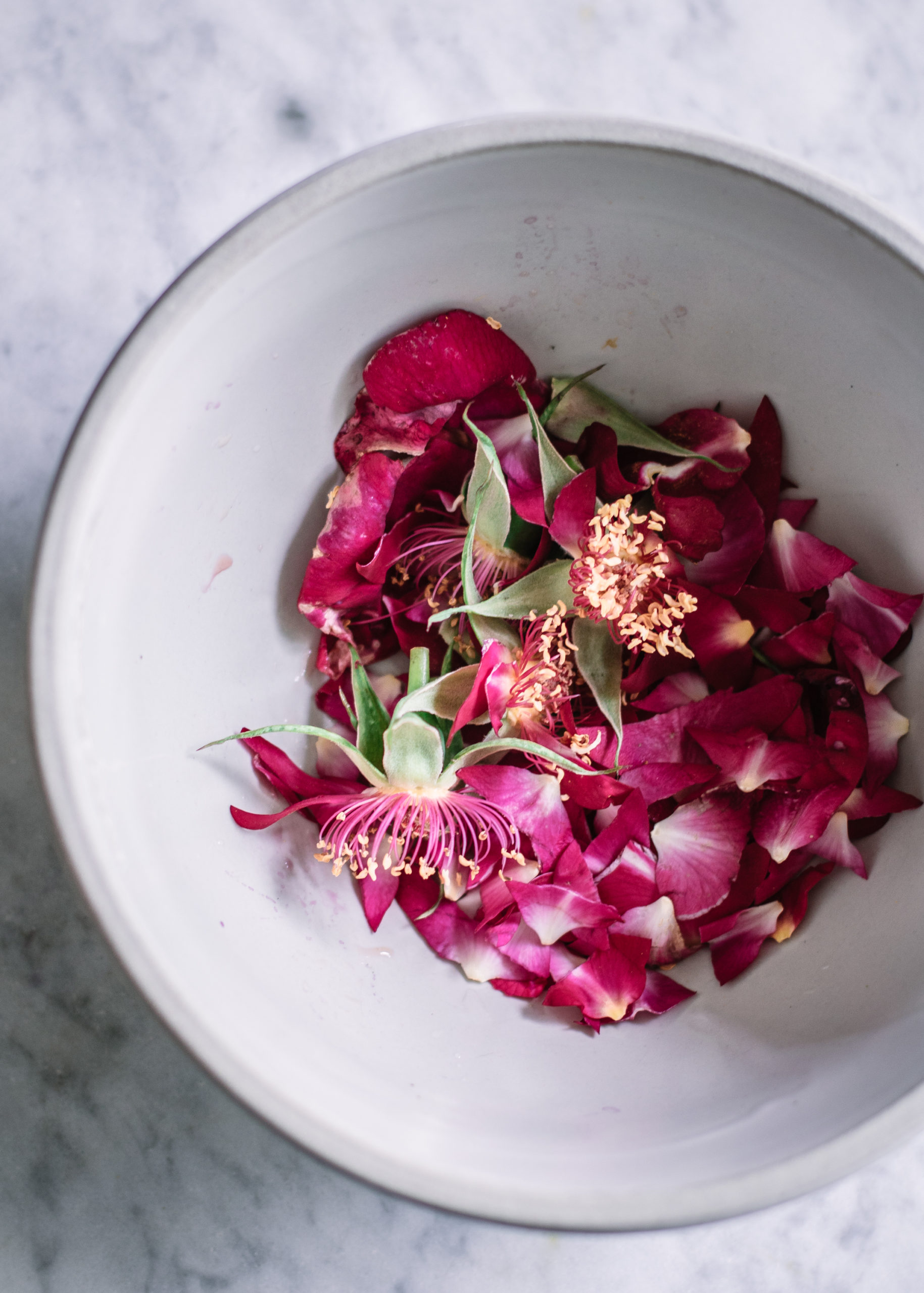
Rhubarb & Rose-Petal Jam with Rosewater
A fragrant and beautifully vibrant jam, blending the tartness of rhubarb with the delicate floral notes of rose, perfect for spreading on toast or pairing with soft cheeses.
Ingredients (Makes about 4 jars)
-
1 kg rhubarb, trimmed and chopped
-
600g granulated sugar
-
50g rose petals (edible and organic, preferably fresh)
-
2 tablespoons rosewater
-
1 lemon, juiced and zested
-
1/2 teaspoon pectin (optional, depending on your preferred setting consistency)
-
1/2 cup water
Method
-
Prepare the rhubarb: In a large bowl, combine the chopped rhubarb with sugar and stir. Let it sit for about 30 minutes to draw out the juices.
-
Infuse the rose petals: While the rhubarb sits, bring the water to a boil in a small saucepan, then remove from heat and add the rose petals. Let the petals steep for about 5–10 minutes. Strain the rose water and set aside.
-
Cook the jam: Pour the rhubarb and sugar mixture into a large pot. Add the rosewater, lemon juice, and lemon zest. Cook over medium heat, stirring regularly, until the rhubarb has softened and the sugar has dissolved.
-
Bring to a simmer: Once the rhubarb softens, increase the heat to a simmer and cook for about 20-30 minutes. Stir frequently, until the jam reaches your desired consistency. If you’re using pectin, add it now and cook for an additional 5 minutes.
-
Test the set: To test the jam, place a spoonful on a chilled plate and let it cool for a minute. Run your finger through the jam; if it wrinkles and holds its shape, it’s ready.
-
Jar the jam: Sterilise your jars by boiling them or warming them in the oven. Pour the hot jam into the sterilised jars, seal them while still hot, and let them cool at room temperature.
This rhubarb & rose petal jam brings together the tangy notes of rhubarb with the gentle sweetness of rose, creating a fragrant, vibrant spread that tastes like spring. The rosewater adds an aromatic layer that’s delicate yet unmistakable. Enjoy it on toast, scones, or even paired with a hard Basque Brebis sheep’s milk cheese!

+ ADD A COMMENT